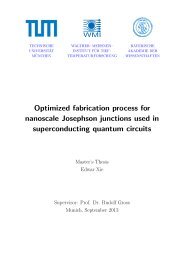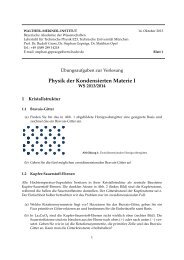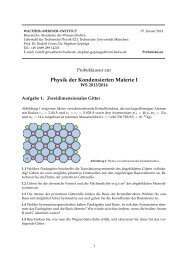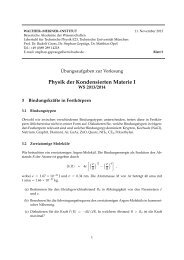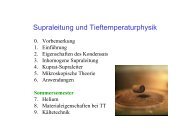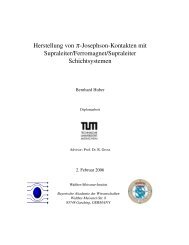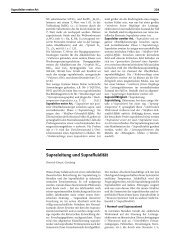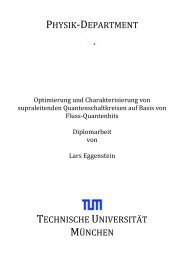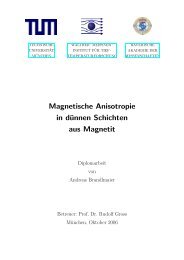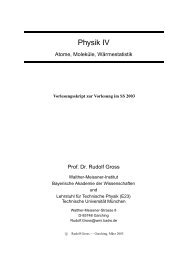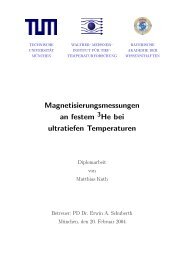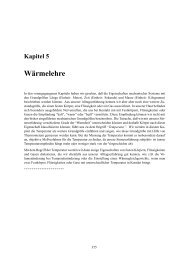Surface magneto-plasmons in magnetic multilayers - Walther ...
Surface magneto-plasmons in magnetic multilayers - Walther ...
Surface magneto-plasmons in magnetic multilayers - Walther ...
Create successful ePaper yourself
Turn your PDF publications into a flip-book with our unique Google optimized e-Paper software.
Chapter 2<br />
Theory<br />
In this chapter a short overview of the theoretical basics of surface <strong>plasmons</strong> is given,<br />
where the focus is on the aspects necessary to understand and <strong>in</strong>terpret the experi-<br />
mental results. At first, the nature of surface <strong>plasmons</strong> is discussed, lead<strong>in</strong>g to the<br />
dispersion relation for surface <strong>plasmons</strong>. Next, the reflectivity of s<strong>in</strong>gle and multi<br />
layer systems is derived and simulations are presented and discussed. F<strong>in</strong>ally, the<br />
<strong>in</strong>teractions of surface <strong>plasmons</strong> with an external <strong>magnetic</strong> field is considered.<br />
2.1 <strong>Surface</strong> Plasmon Polaritons<br />
Collective longitud<strong>in</strong>al oscillations of quasi-free electrons <strong>in</strong> a metal or semiconductor<br />
are called <strong>plasmons</strong>. When these oscillations propagate along the <strong>in</strong>terface of a metal<br />
and a dielectric medium (or vacuum), they are called surface <strong>plasmons</strong>. For surface<br />
<strong>plasmons</strong> the component of the electro<strong>magnetic</strong> wave perpendicular to the <strong>in</strong>terface<br />
decays exponentially, what can be described by an evanescent wave. Thus, the sur-<br />
face <strong>plasmons</strong> are localised near the <strong>in</strong>terface, giv<strong>in</strong>g rise to an enhancement of the<br />
electro<strong>magnetic</strong> field [9, 22]. The enhancement can be expla<strong>in</strong>ed and calculated by<br />
regard<strong>in</strong>g energy conservation [23].<br />
2.2 Dispersion relation<br />
Plasmons <strong>in</strong> general can be described by a plane wave.<br />
A(r, t) = A0e i(kr − ωt) . (2.1)<br />
Here, k = (kx, ky, kz) is the wave vector, r = (rx, ry, rz) the position vector, ω the<br />
5



